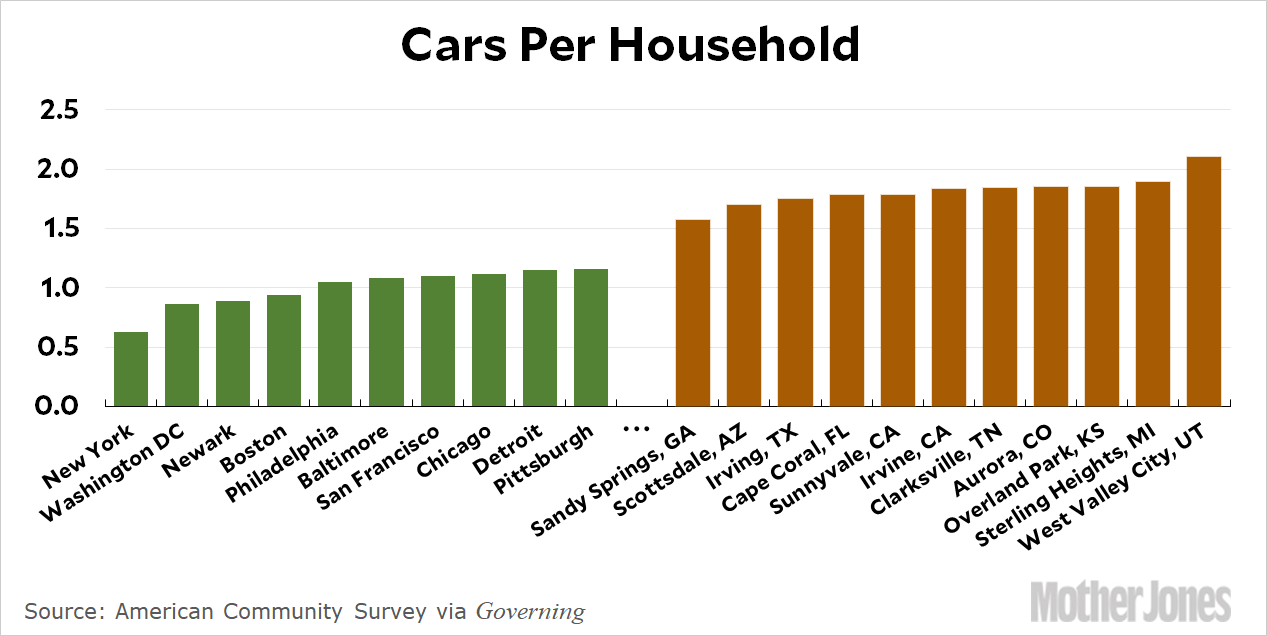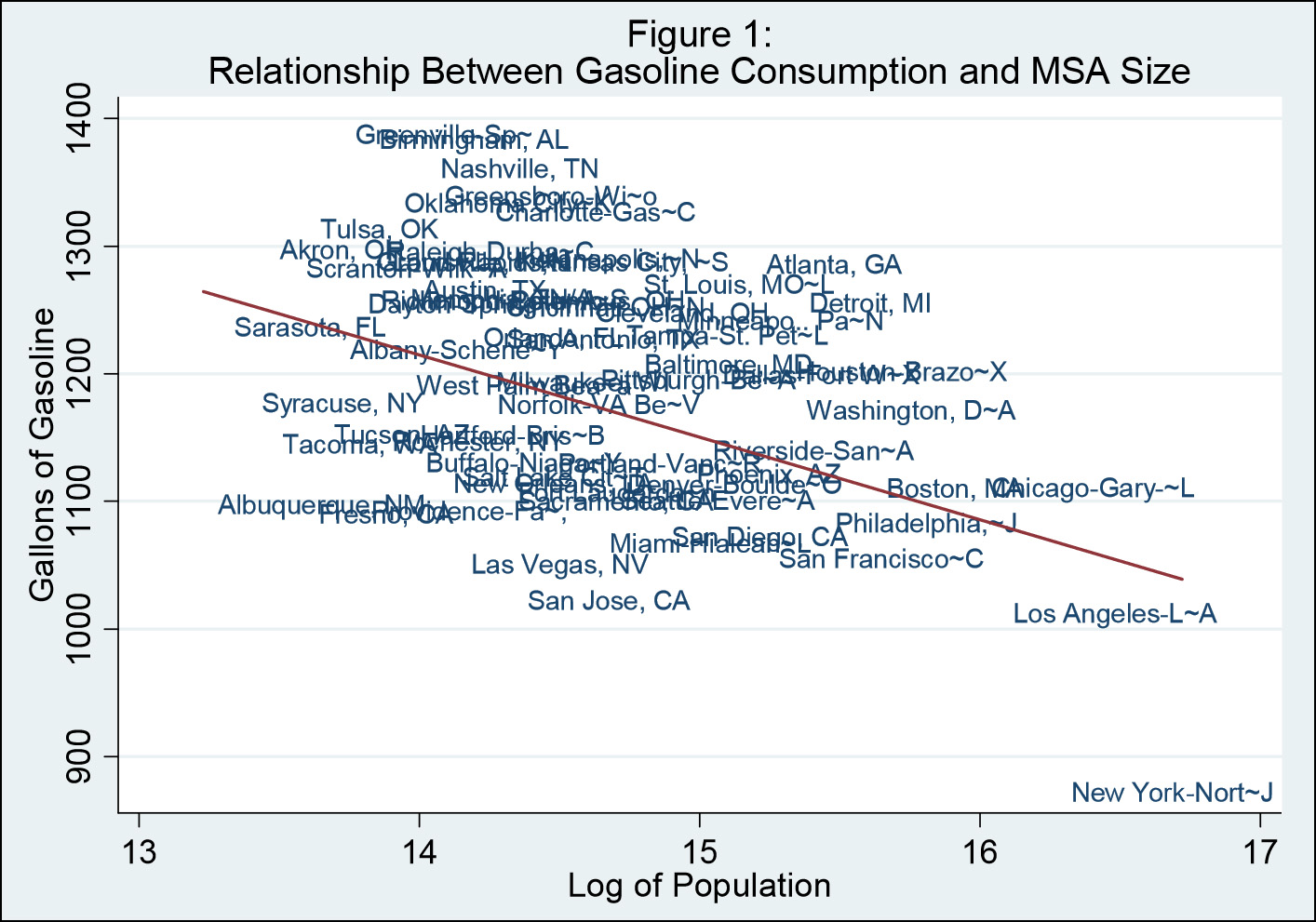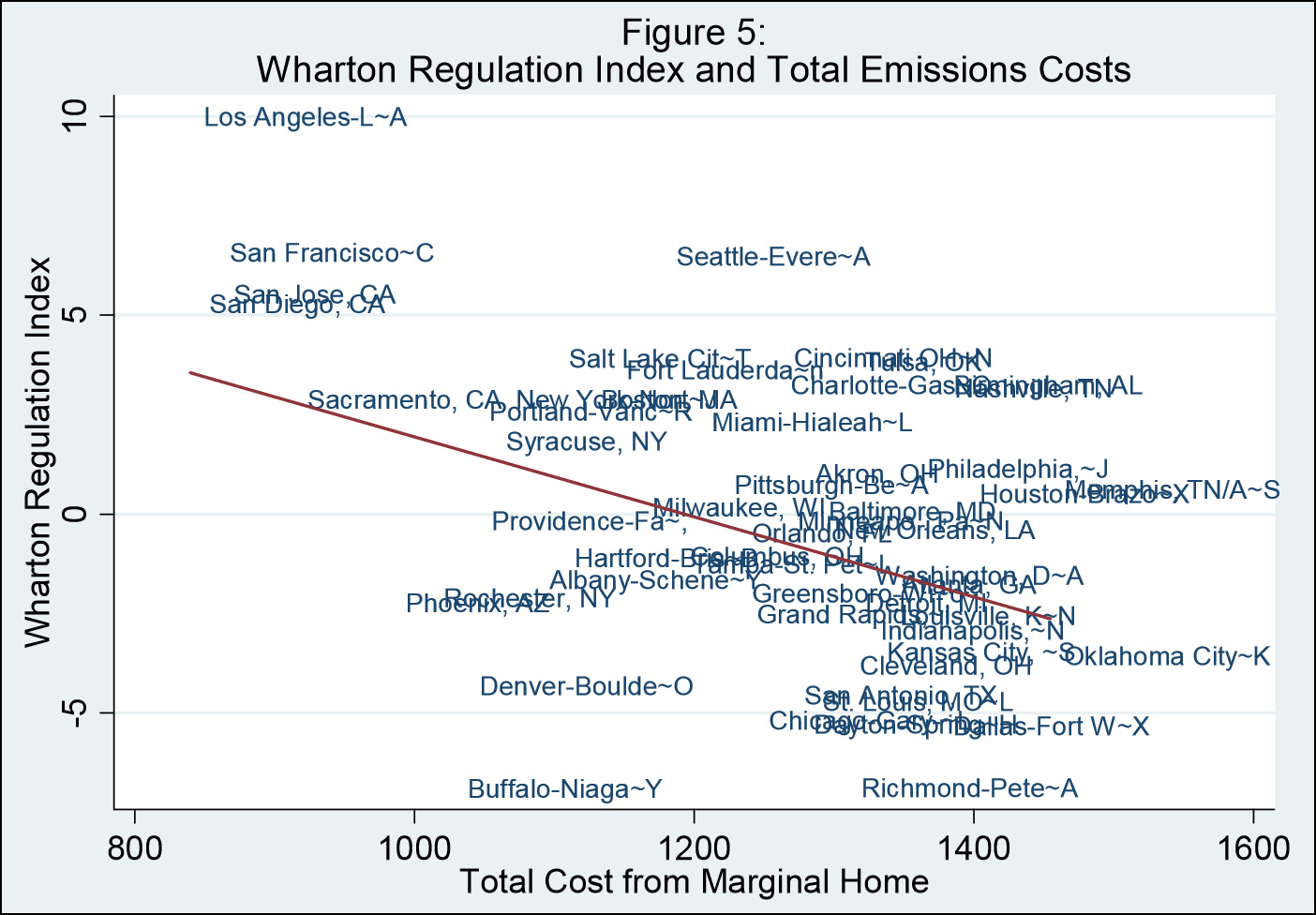One of the most compelling arguments in favor of building dense cities is environmental: cities use less energy per person than suburbs and emit less carbon per person. The reason is exactly the one you’d guess. People in big cities don’t own as many cars as suburbanites:

Ed Glaeser provides the nerd version of this in scatterplot form:

Glaeser’s chart is nearly unreadable, but all that matters is the red trendline: As cities get bigger, they consume less gasoline per person. Using buses or subways (or your feet) is far better for the environment than driving a car everywhere. It’s also cheaper to heat or air condition a single apartment building than it is to do the same for a thousand single-family houses. You can see this in the map below, where big cities are islands of green surrounded by sprawling suburbs in red:

However, there are a couple of things to watch out for. The first is industry: one reason that cities seem so green is because they’ve mostly zoned away dirty industries. However, just because steel mills and fracking operations are forced to operate elsewhere doesn’t mean cities aren’t benefiting from them. In fact, they benefit more than smaller places because big cities tend to be rich, which means they consume more than poorer or more rural areas. This chart outlines the size of consumption-based carbon emissions in big cities:

With the exception of a few big cities in Asia and Africa (light blue), carbon emissions due to consumption are higher than carbon emissions due to industry—in some cases, vastly higher. If you don’t count this, you’re underestimating how much carbon cities are really responsible for. The authors of this report estimate that urban carbon emissions are actually about 60 percent higher than normally estimated if you account for this.
Finally, here’s Ed Glaeser again, with a scatterplot showing the same thing. Cities with stringent land-use regulations basically outsource a lot of their carbon emissions, leading to lower per-capita carbon emissions in the cities themselves:

Even if you discount California, as Glaeser does, there’s a clear relationship: “Places with the least emissions tend also to regulate most heavily. This relationship is strongly statistically significant.”
What this goes to show is how complicated this whole issue is. Generally speaking, researchers agree nearly unanimously that big cities are environmentally friendly. The benefits from their lower number of cars combined with the economies of scale from packing lots of people into a single building are overwhelming. However, to get a true estimate of just how green cities really are, you also need to account for their consumption of goods and services that are produced in outlying areas thanks to land-use regulations.
And that’s tricky all by itself. Big cities tend to be pretty prosperous, which means their consumption of goods and services is high. But why? Do big cities tend to make people wealthier, which causes higher consumption? Or do richer people, who already have high consumption habits, tend to move to big cities? That’s hard to untangle. But to the extent that big cities support high incomes and therefore high consumption rates, they’re not quite as green as you might think.


















